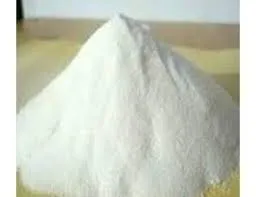
ਸਤੰ. . 10, 2024 13:57 Back to list
High-Performance Computing and Molecular Dynamics - HPMC Formulation
The formulation of Hydroxypropyl Methylcellulose (HPMC) has become increasingly critical in various industries, most notably in pharmaceuticals, food, and construction. HPMC is a semisynthetic polymer derived from cellulose, which is widely appreciated for its exceptional properties, including viscosity enhancement, emulsification, and film-forming abilities. This article aims to delve into the significance of HPMC formulation and its applications across different sectors.
In the pharmaceutical industry, HPMC is primarily utilized as an excipient in tablet formulations. Its capability to control the release of active pharmaceutical ingredients (APIs) makes it invaluable for developing extended-release formulations. By adjusting the concentration and polymer grade of HPMC, formulators can achieve desired release profiles that improve drug efficacy while minimizing side effects. Additionally, HPMC is often employed in gel formulations, where it acts as a thickener and stabilizer, enhancing the texture and consistency of topical applications.
.
In the food industry, HPMC serves multiple roles, including as a thickening agent, stabilizer, and emulsifier. In the production of sauces, dressings, and dairy products, HPMC helps maintain texture and prevent separation, contributing to the product's visual and sensory appeal. Health-conscious consumers are increasingly favoring HPMC-enhanced food products due to their ability to deliver lower-calorie options without sacrificing mouthfeel or flavor. Moreover, HPMC is often used in gluten-free baking, providing the necessary structure and elasticity to compensate for the absence of gluten.
hpmc formulation

The formulation of HPMC extends beyond pharmaceuticals and food; it is also pivotal in the construction industry. As a key ingredient in cement and plaster, HPMC enhances workability and provides improved adhesion and resistance to cracking. Its water retention properties allow for longer working times, enabling builders to achieve higher-quality finishes. Additionally, the versatility of HPMC allows it to be tailored for specific applications, addressing the unique challenges presented in various construction environments.
Despite the myriad of benefits accompanying HPMC formulation, challenges exist. Variability in raw material sources can lead to differences in performance characteristics, necessitating rigorous quality control measures during the formulation process. It is also essential for formulators to stay current with regulatory standards and consumer preferences, particularly in industries like food and pharmaceuticals, where compliance and safety are paramount.
In conclusion, HPMC formulation plays a vital role across multiple industries, lending its unique properties to enhance product performance. From improving the efficacy of drug delivery systems in pharmaceuticals to ensuring the quality and appeal of food products, HPMC demonstrates versatility that is unmatched. As research and development in this area progress, we can expect further innovations that capitalize on the benefits of HPMC, catering to the ever-evolving demands of consumers and industries alike.
-
The Widespread Application of Redispersible Powder in Construction and Building Materials
NewsMay.16,2025
-
The Widespread Application of Hpmc in the Detergent Industry
NewsMay.16,2025
-
The Main Applications of Hydroxyethyl Cellulose in Paints and Coatings
NewsMay.16,2025
-
Mortar Bonding Agent: the Key to Enhancing the Adhesion Between New and Old Mortar Layers and Between Mortar and Different Substrates
NewsMay.16,2025
-
HPMC: Application as a thickener and excipient
NewsMay.16,2025
-
Hec Cellulose Cellulose: Multi functional dispersants and high-efficiency thickeners
NewsMay.16,2025







